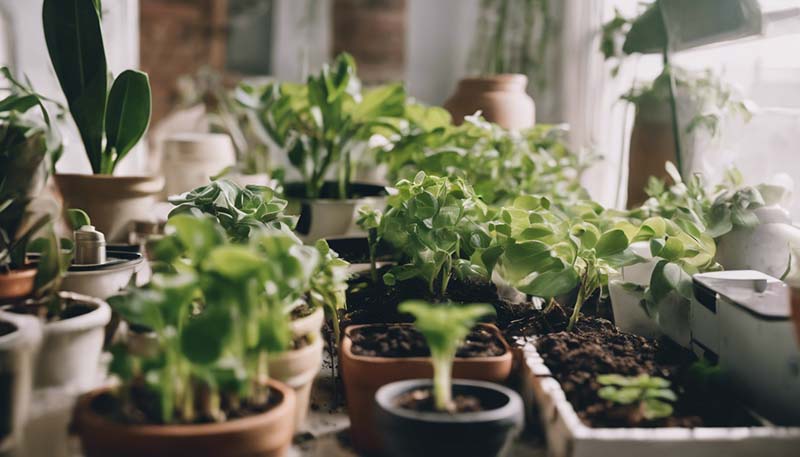Indoor Gardening and Sustainability: How to Reduce Waste
Sustainability is no longer just a buzzword; it's a way of life. With the increasing awareness of our environmental impact, many are turning to indoor gardening as a means to connect with nature, reduce waste, and live a greener lifestyle. This article explores how indoor gardening can contribute to sustainability and offers practical tips on how to minimize waste in your indoor garden.
The Benefits of Indoor Gardening for Sustainability
1. Space Efficiency
Indoor gardens make use of often unused indoor spaces, allowing for year-round cultivation without the need for extensive land use.
2. Water Conservation
Many indoor plants have lower water requirements than outdoor plants, and indoor gardeners can control watering more precisely, reducing water waste.
Advertisement
3. Energy Efficiency
With proper planning, indoor gardens can be placed to take advantage of natural sunlight, reducing the need for artificial lighting and heating.
4. Waste Reduction
Indoor gardening can minimize waste by allowing for composting of organic matter and recycling of water through efficient irrigation systems.
5. Local Food Production
Growing herbs, vegetables, and fruits indoors can reduce the carbon footprint associated with transporting produce over long distances.
Strategies to Reduce Waste in Indoor Gardening
1. Use Recycled or Repurposed Materials
Instead of buying new pots and containers, use repurposed items like cans, jars, or old containers. You can also build your own planters from reclaimed wood.
2. Implement a Composting System
Composting kitchen scraps and plant waste not only reduces the amount of waste sent to landfills but also provides a nutrient-rich soil for your indoor plants.
3. Water Efficiently
Use drip irrigation systems or self-watering planters to ensure that water is delivered directly to the roots, reducing evaporation and runoff.
4. Choose Low-Maintenance Plants
Opt for plants that require less water and maintenance. Succulents and air plants are excellent choices for indoor gardens.
5. Grow Your Own Food
Growing herbs, salad greens, and even small fruit-bearing plants indoors can significantly reduce the packaging waste associated with store-bought produce.

6. Use Natural Pest Control
Instead of chemical pesticides, opt for natural pest control methods such as introducing beneficial insects or using organic sprays.
7. Optimize Light Usage
Maximize natural light and use energy-efficient LED grow lights to reduce electricity consumption.
8. Plan for Succession Planting
Plan your indoor garden in such a way that when one crop is harvested, another is ready to be planted, ensuring that the space is always in use.
Conclusion
Indoor gardening offers a unique opportunity to engage with nature in a sustainable way. By implementing waste reduction strategies and embracing a more efficient approach to plant care, indoor gardeners can contribute to a greener, cleaner environment. Not only does this lead to a more sustainable lifestyle, but it also enhances the beauty and health of our living spaces.
Remember, every little action counts. Start your sustainable indoor gardening journey today and make a positive impact on the environment.
Comment